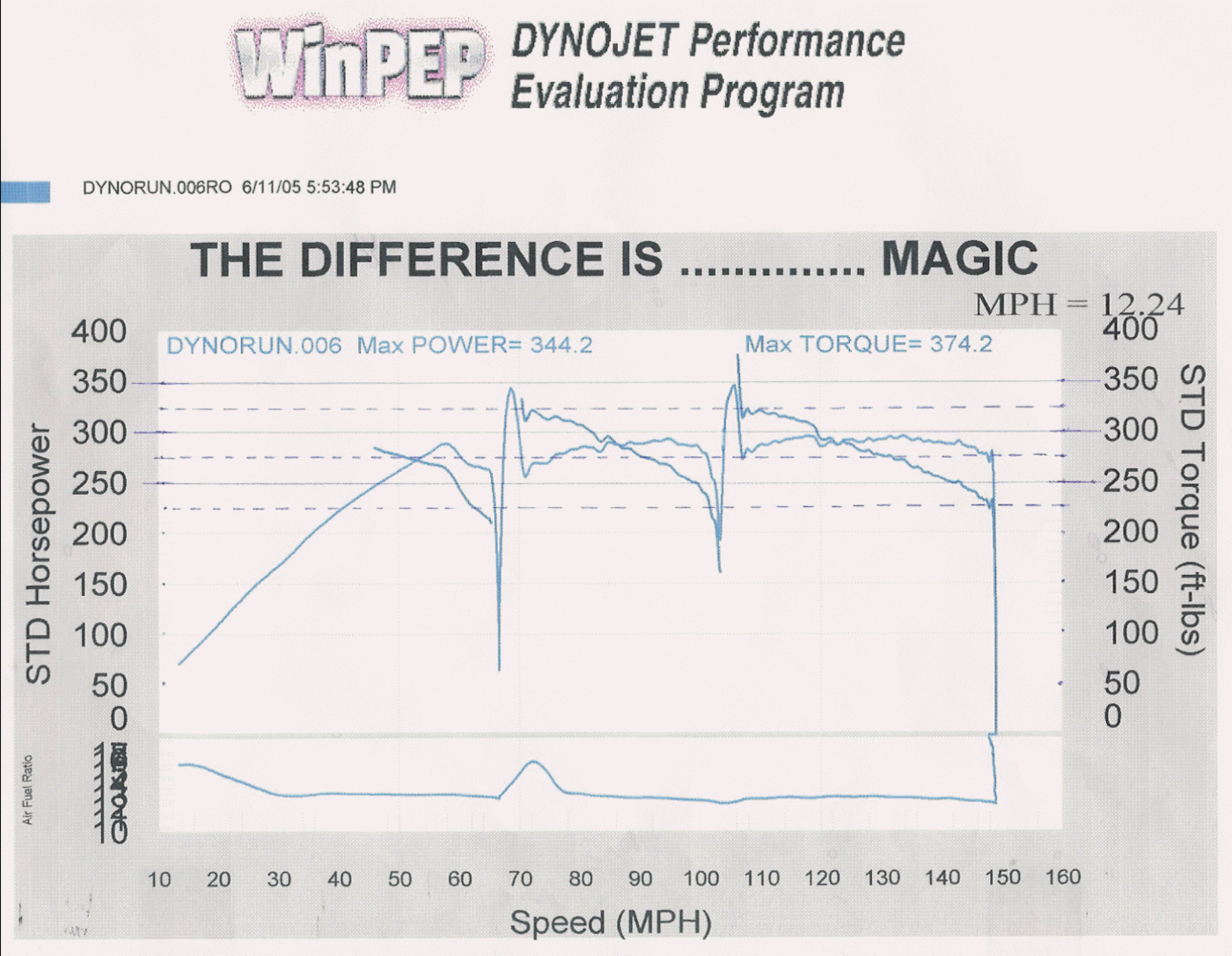Originally posted by c55m8o
BTW, J, I still wish to come to some clarity on the subject...I think I put my finger on the whole back and forth. I finally realize we still continue to use the same terminology, but are talking about slightly different things when we say rw hp (or rw torque) ... I'll annotate this with a visual aid <grin>.
So, please note my HP/Torque graph I posted in the middle of this thread ... actually, I'll post it here...

(btw, this is the stock E55 chip program. DYNORUN.001 done with the mod'ed E55 program peaked @ 306hp, but I don't have it graphed like this.)
So to understand, I'll ask, how is it the HP & Torque graphs when the car is in third, is measured and rendered to the same values @ the same RPM as when the car is in fourth? I know that this graph represents hp (& calculated torque) to the rear wheels, not crank. (any why I'm saying "dynos normalize", to =remove= gearing from the equation).
I also know though, you're saying "hp to the wheel is greater the shorter the rear" ... well yes, but I guess I'd like to call that linear force @ the tire's contact patch, not rwhp. But isn't it true that's also the case the lower the tranni gear? i.e. more force @ the tire's contact patch in 3rd vs. 4th, and 2nd vs. 3rd, and 1st vs 2nd?
So what I'm trying to understand, is it you are saying that the graph above is =not= a rear wheel hp and rear wheel torque graph? What is it then / what would you name it? I don't think that's the case. And I know it's not "crank" hp & torque. So what I'm having trouble with is, if that graph shows rwhp, how can we call what you're saying -- that =includes= gearing in the equation and any resulting graph if it were to be graphed -- rwhp too? (actually, CarTest2000 does have a particular name for that, but that's on my laptop and I'm not up for going to get it, plug it in and turn in on to see @ the moment...).
Therefore, perhaps, wouldn't it be better to call the force being applied the the tire's contact patch that is a result of including gearing in the equation which you keep using, =effective= HP and =effective= torque? ... it is the =effective= torque applied to the tires' contact patch, as a result of torque multiplication when taking gearing into account as well.
So I finally get to the point, that I guess it all boils down to is it generally accepted to call it rwhp, and include gearing? I personally, thought it was not ; that rwhp is the engine crank torque, passed through the drive-train and tires, and the rotating torque at a speed (a.k.a. HP) is measured, and normalized to remove gearing ; and if gearing was included, it should be called something else (i.e. effective rwhp).
thoughts?
All I was pointing out the relation of higher rear diff on C43 vs E55 E210. Which why attribute to different reading.
If you want to prove me wrong try the same car dyno with different rear-diff gear ratio and you will see what I am trying to say.
When it comes down to dyno using stock gearing sure this applies:
quote:
So I finally get to the point, that I guess it all boils down to is it generally accepted to call it rwhp, and include gearing? I personally, thought it was not ; that rwhp is the engine crank torque, passed through the drive-train and tires, and the rotating torque at a speed (a.k.a. HP) is measured, and normalized to remove gearing ; and if gearing was included, it should be called something else (i.e. effective rwhp).
But when the gearing changes is in the equation that when you see increase in rearwheel hp.
If you think about it, dyno doesn't know whether the geariing has been changed from 2.82 to 3.07 for example. (all it jobs is measuring rotational force either applying brake horse power or vise versa).
All it knows when it measure the rotational force is now greater (as a result of the new gearing).
As I mentioned before upgrading the rear-end diff is not a hack job. Its need to be calculated properly.
If you see some aftermarket company offer it for a specfic ratio, its there for a reason (they probably already done back to back calculation and R&D to select particular ratio, otherwise if it is too high you might just getting better 0-60 time , but slower at 1/4 miles and slower at higher speed).
Regardz,






 Reply With Quote
Reply With Quote